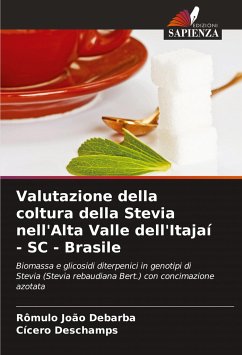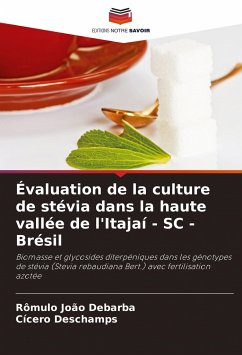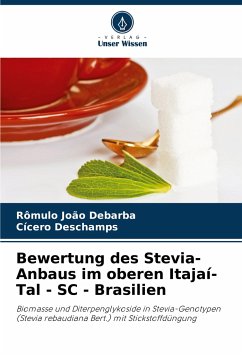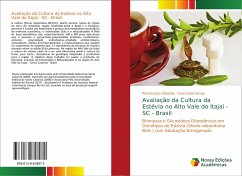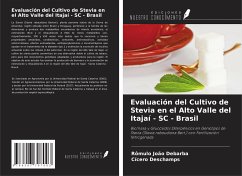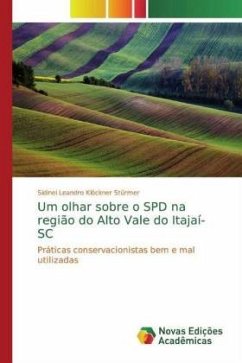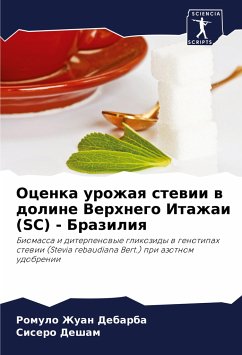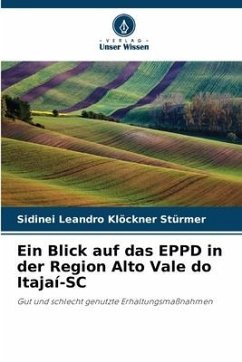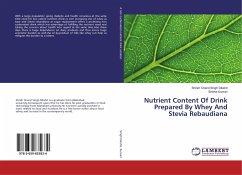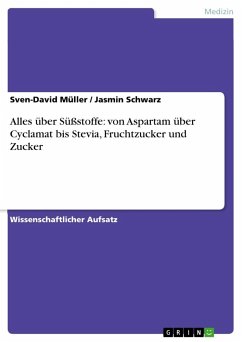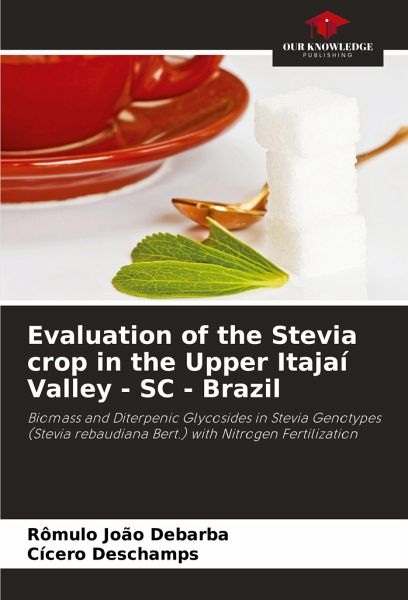
Evaluation of the Stevia crop in the Upper Itajaí Valley - SC - Brazil
Biomass and Diterpenic Glycosides in Stevia Genotypes (Stevia rebaudiana Bert.) with Nitrogen Fertilization
Versandkostenfrei!
Versandfertig in 6-10 Tagen
24,99 €
inkl. MwSt.

PAYBACK Punkte
12 °P sammeln!
Stevia (Stevia rebaudiana Bertoni), a perennial plant native to the Amambaí mountain range, a region located between Brazil and Paraguay, belongs to the Asteraceae family and produces two secondary metabolites of economic interest, stevioside (Est) and rebaudioside A (Reb A). These metabolites are, respectively, 300 and 450 times sweeter than sucrose and have antacid, cardiotonic, anticaries, antirotavirus properties, antimicrobial activity, antioxidant, antihyperglycemic and insulinotropic effects that help in the treatment of type 2 diabetes and stimulate insulin secretion by acting on the ...
Stevia (Stevia rebaudiana Bertoni), a perennial plant native to the Amambaí mountain range, a region located between Brazil and Paraguay, belongs to the Asteraceae family and produces two secondary metabolites of economic interest, stevioside (Est) and rebaudioside A (Reb A). These metabolites are, respectively, 300 and 450 times sweeter than sucrose and have antacid, cardiotonic, anticaries, antirotavirus properties, antimicrobial activity, antioxidant, antihyperglycemic and insulinotropic effects that help in the treatment of type 2 diabetes and stimulate insulin secretion by acting on the beta cells of the pancreas. In the Alto Vale do Itajaí region, the cultivation of stevia could become a viable alternative to tobacco cultivation. To do so, we need genotypes that are adapted and productive for the region. The aim of this study was to evaluate biomass production and the accumulation of stevioside and rebaudioside A in the Alto Vale do Itajaí region - Santa Catarina - Brazil.





